This piece is part of the Taiwan-U.S. Quarterly Analysis series, which features the original writings of experts with the goal of providing a range of perspectives on developments relating to Taiwan. This piece was updated on April 6, 2023 to include graphs depicting survey results.
For a time, it looked as though House Speaker Kevin McCarthy would make a high-profile visit to Taiwan this spring. There was some suggestion that this might lead Beijing to react even more coercively than it did after the previous speaker, Nancy Pelosi, visited in August 2022. Perhaps for that reason, McCarthy will now have a meeting with Taiwanese President Tsai Ing-wen when she transits through Los Angeles, California. Depending on how McCarthy frames his support for Tsai, however, the People’s Republic of China (PRC) might still escalate its military operations around Taiwan to signal its opposition to the alleged “hollowing out” of the U.S. “One China” policy. Depending on the scale of these actions, some Taiwanese voters might again conclude that such symbolic demonstrations of support risk entrapping Taiwan in an escalating U.S.-China rivalry.
According to recent surveys we conducted in Taiwan, a majority of respondents believe that Pelosi’s visit was detrimental to Taiwan’s security. At first glance, this seems surprising. In a triangular relationship between a patron state (the United States) and its client (Taiwan) on the one hand, and a shared adversary (China) on the other, one might normally expect the client to welcome visible and credible signals of support.
However, even as its security environment appears to be deteriorating, a client might not welcome signals of support from the patron if the client considers those signals to be so provocative that they undermine its security. Typically, it is the patron that worries about entrapment by its client, while the client worries about abandonment by the patron. But our surveys suggest that a considerable portion of Taiwanese voters worry about entrapment by the United States. There are, of course, partisan differences concerning fears of entrapment. Supporters of the Kuomintang (KMT) and independents worry that the convergence of Democratic Progressive Party (DPP) and U.S. preferences toward strategic competition with China makes Taiwan less secure.
This concern about entrapment appears to have increased after Pelosi’s visit. We conducted a panel survey in Taiwan with two waves, one in September 2022 and a second in January 2023, to gauge the Taiwanese public’s reaction to Pelosi’s very public demonstration of support for Taiwan. In 2022, we asked respondents, in the wake of Pelosi’s visit and the PRC’s unprecedented military exercises around Taiwan, whether Taiwan faced a serious threat. In January 2023, we followed with a slightly different question about whether Pelosi’s travel had made Taiwan more or less secure.
In September 2022, respondents overwhelmingly believed that Pelosi’s trip and the large-scale People’s Liberation Army exercises created a serious threat to Taiwan. Somewhat surprisingly, this response was similar across the political partisan divide in Taiwan (Figure 1). Media reports, in both Taiwan and the West, have suggested that many Taiwanese citizens did not originally seem too bothered by China’s reactions.
After the initial shock, the majority of respondents in the January 2023 survey still believed that Pelosi’s visit made Taiwan less secure (Figure 2). But partisan differences were clearer in the answers to this question than they had been in September. A majority of KMT supporters and independents (as well as one-third of DPP supporters) believed that Pelosi’s visit had made Taiwan less secure (Figure 3). By contrast, a majority of DPP supporters felt the opposite was true.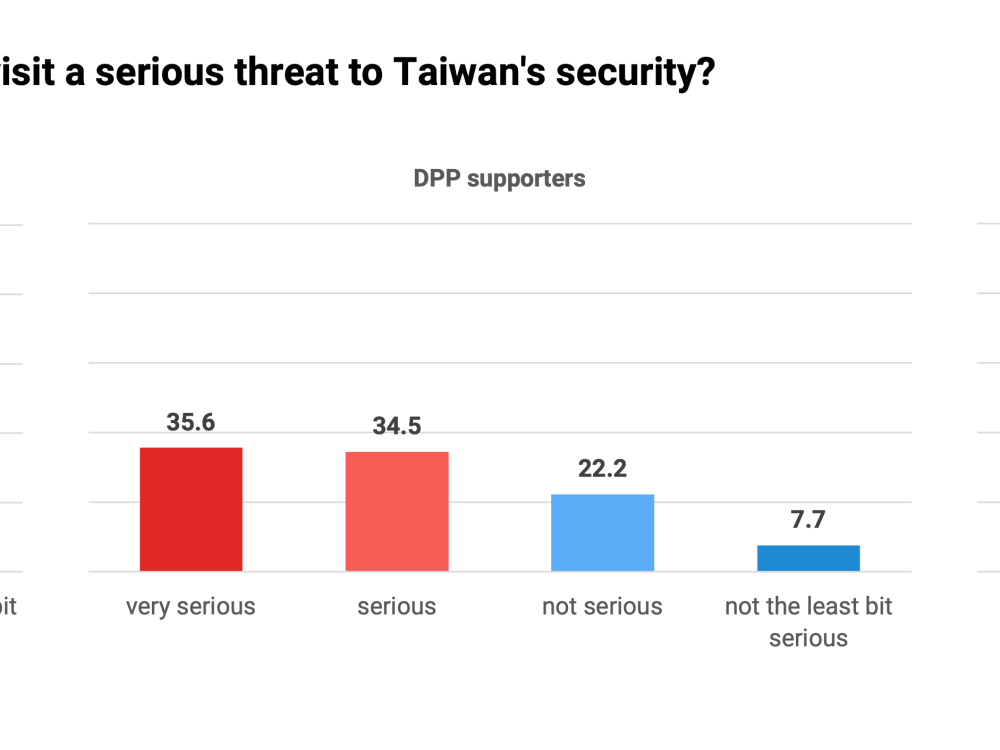
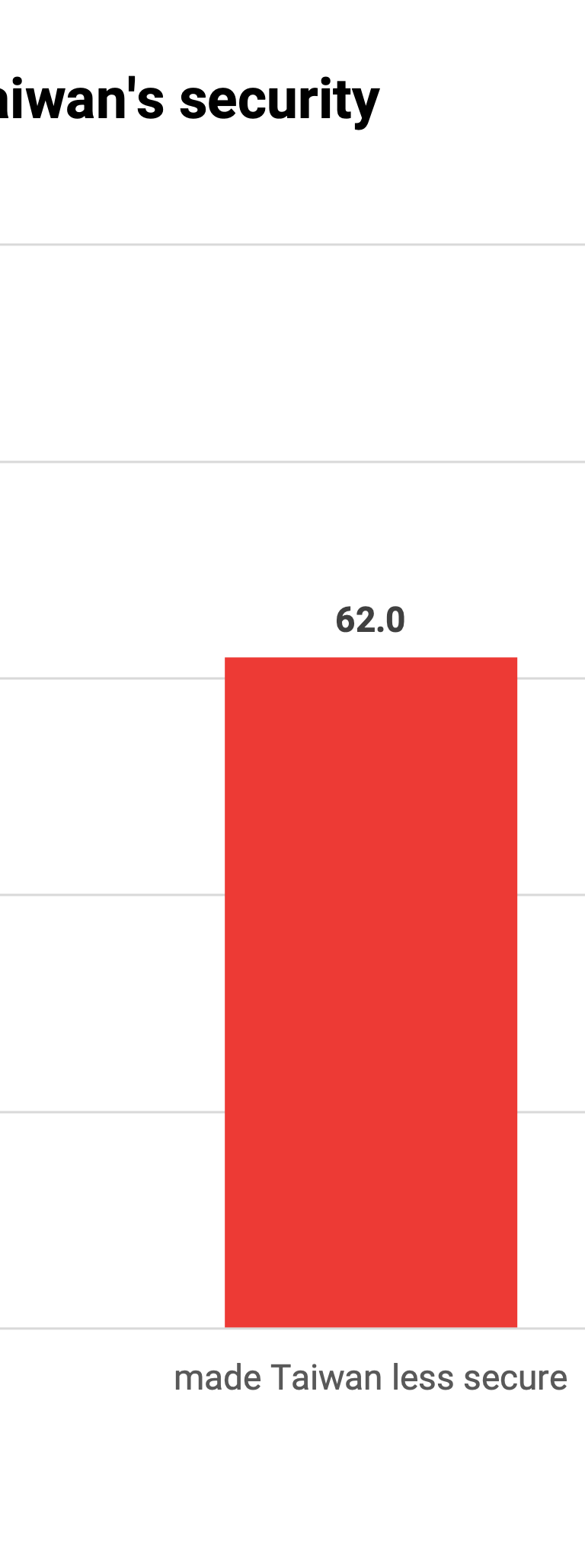
Indeed, by January 2023, 52% of our DPP respondents had shifted to the conclusion that Taiwan was more secure in the wake of the visit. In contrast, only 21% of the independent respondents and 11% of the KMT respondents had done so.

Such a shift may have resulted from reassuring U.S. policy initiatives or confirmation bias, or both. For example, by January 2023, some DPP supporters may have been responding to the U.S.-Taiwan Initiative on 21st-Century Trade and a $12 billion military aid program. Alternatively, some DPP supporters may have perceived, or wanted to perceive, a change in U.S. policy after our first survey in September 2022 and looked for evidence for their beliefs. Based on answers to other questions we asked in the 2023 survey about the likelihood of possible gestures of U.S. support for Taiwan, those DPP respondents who shifted their perception of Taiwan’s security in a more positive direction between surveys also believed that the United States would diplomatically recognize Taiwan, would send troops to defend Taiwan if attacked by the PRC, and would conclude a trade agreement with Taiwan.
A “Folk theory” of Taiwanese Security?
In addition to asking respondents about the impact of Pelosi’s visit on Taiwan’s security, we also probed the panel respondents about whether they had a “folk theory” of security — that is, intuitions about the factors influencing Taiwan’s security based on their own biases and lived experiences. We gave respondents five common explanations for cross-strait instability and asked them whether they agreed or disagreed with each.
A large portion of respondents appears to have a relatively plausible multi-causal “theory” of how Taiwan’s security is threatened (Figure 4). A large majority agrees that the PRC’s aggressive intentions are a source of instability. A smaller majority believes that increasing levels of support for independence in Taiwan is a source of instability. And only about 55% attribute instability to shifts in U.S. policy toward a “One China, One Taiwan policy.” On the other hand, majorities of respondents tended not to attribute instability to the neglect of defense building in Taiwan or to U.S. strategic ambiguity. Together these results suggest that many voters essentially lean toward the ideas embedded in the traditional U.S. policy of dual deterrence: Taiwan is more secure when the PRC’s aggressive intentions are countered and when the PRC is assured that U.S. policy does not encourage formal independence.
Not surprisingly there are partisan differences. DPP supporters are more likely to blame inadequate military spending as a source of instability than KMT supporters and independents (Figure 5). Similarly, while KMT supporters and independents do not think U.S. strategic ambiguity is a source of instability, a small majority of DPP supporters does (Figure 6). While all groups attribute instability to the PRC’s aggressive intentions, DPP supporters overwhelmingly do so (Figure 7). Interestingly, all groups also agree that greater support in Taiwan for independence is a source of instability, though a smaller majority of DPP supporters agree than others (Figure 8). Not surprisingly, a large majority of KMT supporters agree that the hollowing out of the U.S. “One China” policy is a source of instability, but independents and DPP supporters are relatively evenly split (Figure 9).






Implications
Our surveys have a couple of tentative implications for policy discussions in Washington about how to preserve Taiwan’s security.
First, our data suggests that if a substantial constituency in the client state believes such high-profile signals of support are counterproductive, this can weaken the security relationship between patron and client, making coordinated responses to the common adversary more difficult. A McCarthy-Tsai meeting, or a McCarthy visit to Taiwan, may only be prospectively reassuring to a majority of Taiwanese if they believe that the PRC response will be milder than it was after Pelosi’s visit. And if China does react less coercively after McCarthy’s symbolic actions, then it is possible that, retrospectively, at least some KMT and independent voters may conclude such actions are a useful signal of support. On the other hand, even a slightly less threatening PRC response may not be reassuring enough to KMT and independent voters, given their concerns about entrapment. Our surveys suggest that KMT supporters, and to some degree independents, do not identify culturally or politically with the United States nearly as much as DPP respondents do (Figure 10). And as Figure 4 suggests, many KMT supporters and independents blame growing support for independence as a source of cross-strait instability. So, it may be unlikely that many KMT and independents will interpret a McCarthy-Tsai meeting as a useful symbol of U.S. support in the face of PRC coercion, especially if it is viewed as a partisan statement of support for the DPP government.

A second implication of our results concerns the effectiveness of deterrence. Washington’s discourse about how to deter the PRC emphasizes military tools over the synergistic effects of assuring Beijing that the United States is not encouraging or enabling formal Taiwanese independence. Proponents of dual deterrence claim that, since 1972, credible coercion and credible assurance have kept the probability of a PRC takeover of Taiwan relatively low and will likely continue to be more successful compared to alternative U.S. strategies, such as allowing and/or recognizing a de jure independent Taiwan. This may or may not be the case. There is a debate over whether dual deterrence is the best of a bad set of options for reducing the probability of conflict. But our analysis of respondents’ “folk theory” of security suggests that a considerable portion of the Taiwanese population seems to agree with the dual deterrence notion. This may be the conceptual basis for their concern about entrapment by U.S. politicians.
Methodology
The 2022 household telephone survey was conducted between September 22 and 29, 2022, by the Election Study Center, National Chengchi University. We randomly drew samples according to the area codes of telephone books. Only respondents who were over 20 years old and registered in Taiwan were eligible for this survey. Data was weighted by gender, age, education, and residence area based on the latest census data. The sample size was 1,127. The margin of error with 95% confidence interval is 2.92%. The 2023 panel study was conducted between January 5 and 9, 2023. We successfully re-interviewed 576 respondents or about 51% of the 2022 sample. The data was also weighted by gender, age, education, and residence area. The main questions we analyze are: “In August this year, U.S. Congress Speaker Nancy Pelosi visited Taiwan, and China immediately held large-scale military exercises around Taiwan. Do you think this is a serious threat to Taiwan’s security?” (September 2022 survey); and “Do you think Pelosi’s visit to Taiwan made Taiwan more or less secure?” (January 2023 survey).
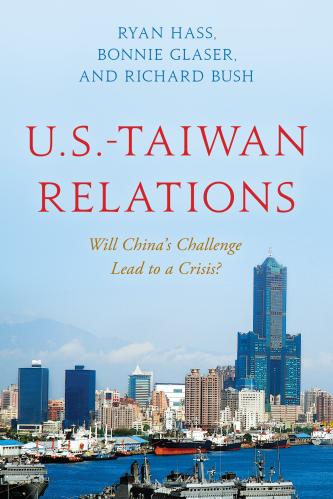

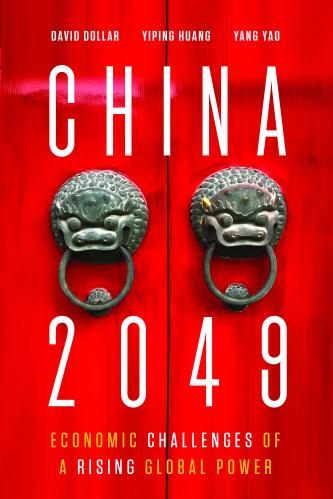
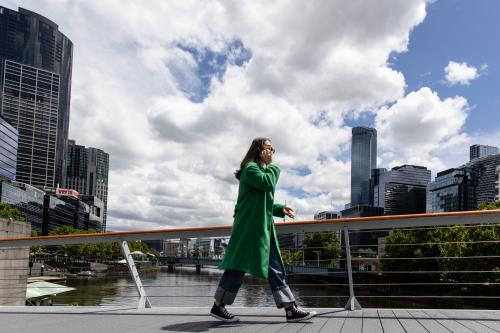




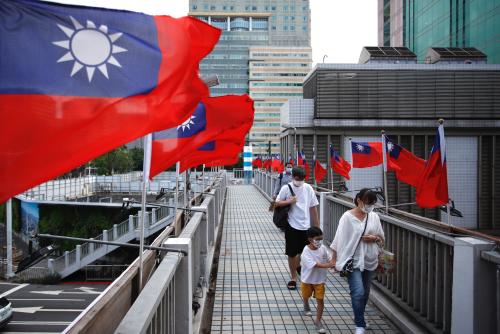
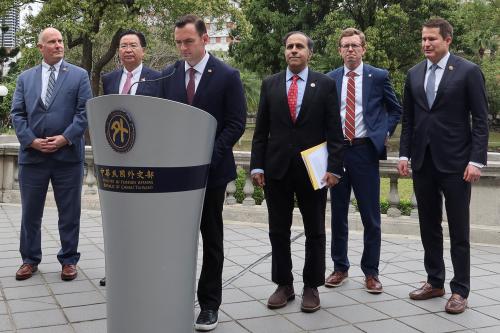
Commentary
When might US political support be unwelcome in Taiwan?
April 5, 2023